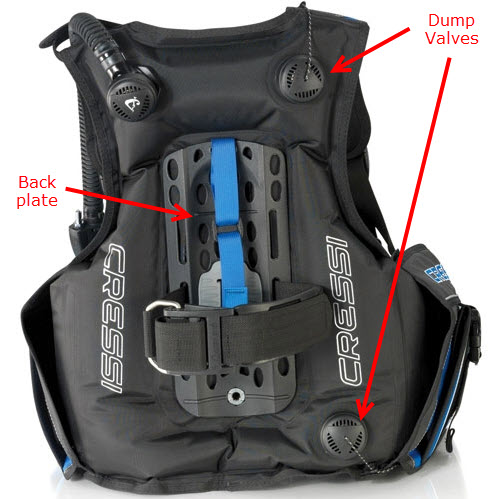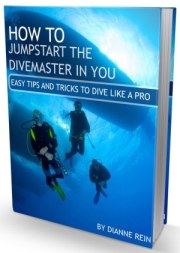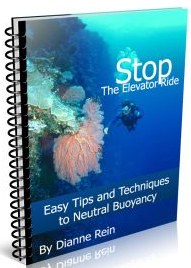BC Scuba
Parts of a Buoyancy Compensator Explained
One piece of necessary scuba gear is your BC for scuba diving. It lets us have a nice, comfortable dive underwater.
Imagine trying to stay neutrally buoyant without a buoyancy compensator. Doesn't make for a pretty picture, does it?
But if you are new to diving or are thinking of purchasing a scuba diving BC, an understanding of all the parts that comprise a scuba BC would be helpful.
So you are at the right place.
Below we explain and name the parts of a scuba diving BC including dump valves, inflator and deflator hoses, straps and more. Using a piece of scuba gear is usually easier if you understand what it is all about.
So let's get familiar with the BC scuba diving.
(For more information on BC's, read our free Scuba BCD Buyers Guide.)
(If you have trouble staying neutrally buoyant, you might find our page on buoyancy control scuba diving tips. helpful.)
Scuba BCD Parts
- Air Bladder:
- Inflators
- Deflators and Dump Valves
- Pressure Release Valve:
- Backplate:
- Waistband/Assorted Straps:
- Pockets/Rings
- Weight Pockets
-
Unofficially Summer
May 25, 24 07:19 AM
Well it is finally here. Memorial Day weekend and the unofficial start of summer! Wishing everyone a happy and healthy holiday weekend. Hopefully the weather cooperates wherever you are and you will b… -
Happy New Year
Jan 01, 24 06:00 AM
Happy New Year everyone! I hope everyone is well and had a fun New Years Eve! May your new year be filled with lots of wonderful dives. All the best to you and yours in 2024! Let the dives begin. -
Happy Holidays
Dec 14, 23 05:05 AM
I hope everyone is enjoying the holiday season! I am always amazed at how fast time flies and another year is just around the corner. I wanted to pop in and say hi to everyone. I am doing some full ti… -
3 Common Scuba Diving Mistakes New Divers Make
Feb 23, 23 02:18 PM
In this video, I share 3 common scuba diving mistakes beginner divers make. Learn how to correct these for a better - and safer - dive. -
Scuba Diving Tipping Etiquette: How Much And When To Tip Scuba Crew
Feb 06, 23 03:34 PM
Not sure of scuba diving tipping etiquette? In this video I share who to tip, when to tip, how much to tip, tipping on liveaboards, tipping an instructor & more
This is exactly what is sounds like - a bladder that holds air and pretty much the reason modern scuba bc's exist. You can inflate or deflate the bladder to help you stay neutrally buoyant.
-
The air bladder in the photo to the right begins in the back and wraps around your waist. There are also "wing" style BC's where the air bladder is located in the back and does not wrap around.
There are two types of inflators - a power inflator and a manual inflator. Both accomplish the same thing - putting air into your scuba diving BC.
The power inflator is connected to your tank via a low pressure hose from the first stage of your scuba diving regulator. All you have to do is push the inflator button and air is put into your BC scuba.
With the manual inflator (or oral inflator), you put air into the BC air bladder by blowing into a mouthpiece on the inflator hose. All you have to do is press a button to open up the hose connected to your BC and then blow. It is generally located right next to the power inflator button.
As you probably guessed by the name, these do the opposite of the power inflators - namely, let air out of your dive BC.
For the manual deflator, all you have to do is push a button on the inflator hose to let the air out of your BC. The easiest way to let air out is to go upright, lift the hose above your head and press the deflator button. A BC scuba will typically have one or more dump valves. These are operated by pulling on a string which, in turn, lets air out of the bladder.
One dump valve is usually located on the left shoulder near where the hose is connected.
A common spot for a second dump valve is on the lower bottom of the BCD. This lets you dump air if you are inverted in the water (since air is released from the highest point.)
My BC has two dump valves, one on the shoulder and one on the back in the lower right corner.
Scuba BC's typically also contain one more valve - a pressure release valve. This valve will automatically release air from the bladder if the BC is overinflated.
This is usually a hard piece of plastic on the back of a dive BC where the tank is placed. The tank is then attached to the BC with a nylon belt that has a locking buckle.
Your scuba diving BC has a cummerbund like strap that goes around your abdomen and secures the BC in place. It is fairly thick and has velcro that holds the strap together.
A BC also has a strap with interlocking buckles on the upper chest and on top of the cummerbund style waistband. These buckles are similar to what you see on travel backpacks. They secure and hold the BC in place.
Many BC's also have velcro tabs that will hold your hoses in place so they don't get in the way and you can always reach them if need be.
Most BC's will have pockets so you can store your accessories, or whatever, during your dive. You will also find rings attached to the front of the BC so you can hook your gear on or attach other accessories (such as a dive light).
Some dive BC's use an integrated weight system. That means that you put the weights in specially designed pockets in the BC so you don't have to wear a weight belt. They are designed so you can quickly get rid of the weights (or most of the weights) in case of an emergency.
My BC for scuba diving doesn't have an integrated weight system so I use a weight belt. However, on my Cozumel scuba diving vacation I rented a scuba BC that used the integrated weight system. I loved it. When my BC goes kaput, I am buying one that uses a weight integration system (hmm, maybe I won't even wait that long).
So there you have it, all the parts of your BC scuba you never wanted to know about. Only kidding - it is always good to be familiar with your equipment. The scuba BC is a pretty low tech piece of scuba gear so it's easy to become comfortable with it.
You might want to take a look at our picks for best buoyancy compensators here or our guide to BC's for more information. You can also check out our BC Store for all the scuba diving BCD's we have available.
Looking for other scuba equipment and accessories? Check out our picks for best dive equipment.
Have a nice comfortable dive.
Want to stay down longer and improve your buoyancy control and other diving skills? Our free report "Increase Your Bottom Time" along with our practical, weekly actionable tips will have you looking like a seasoned diver in no time. So come join us and see improvement on your very next dive!
(Click on the photo to join us now!)














New! Comments
Have your say about what you just read! Leave me a comment in the box below.